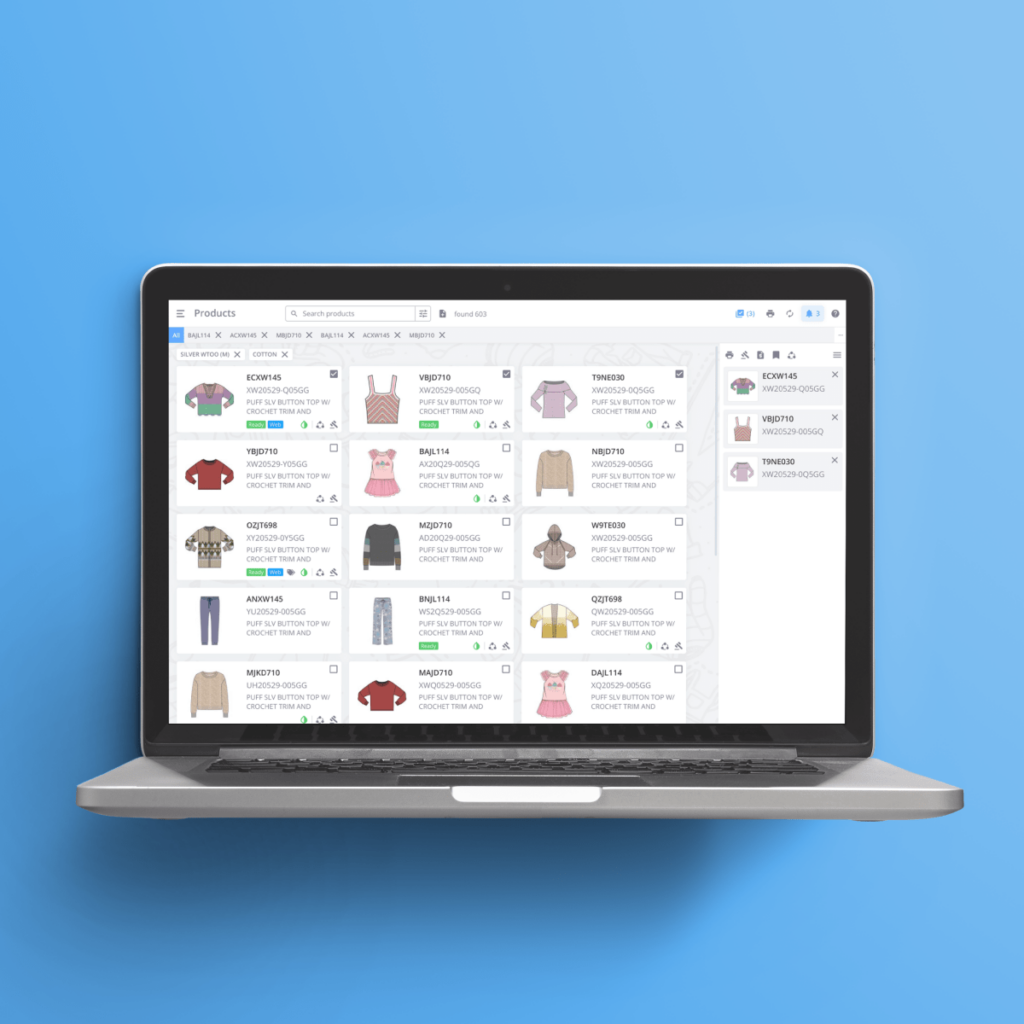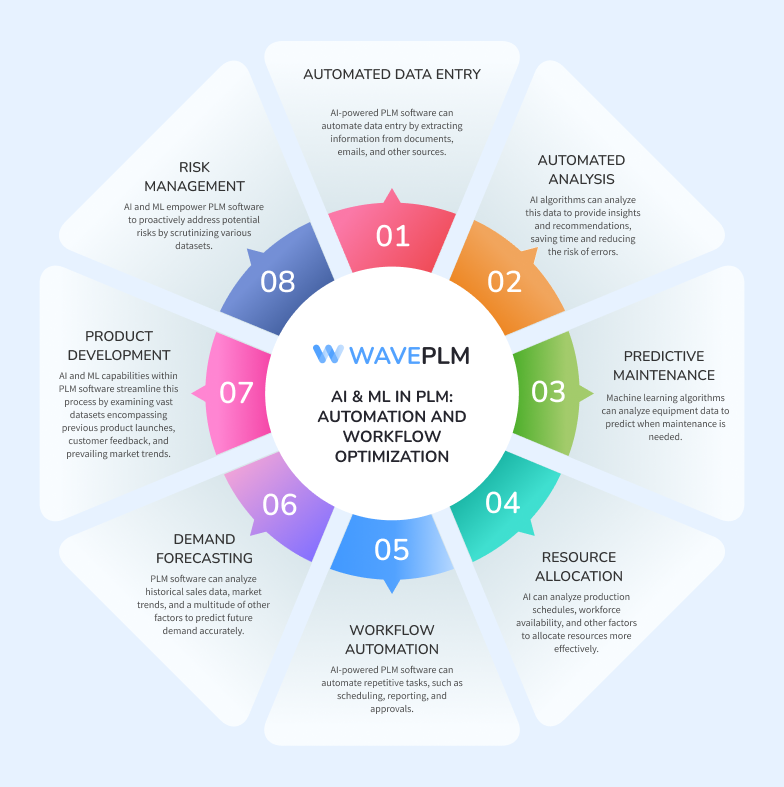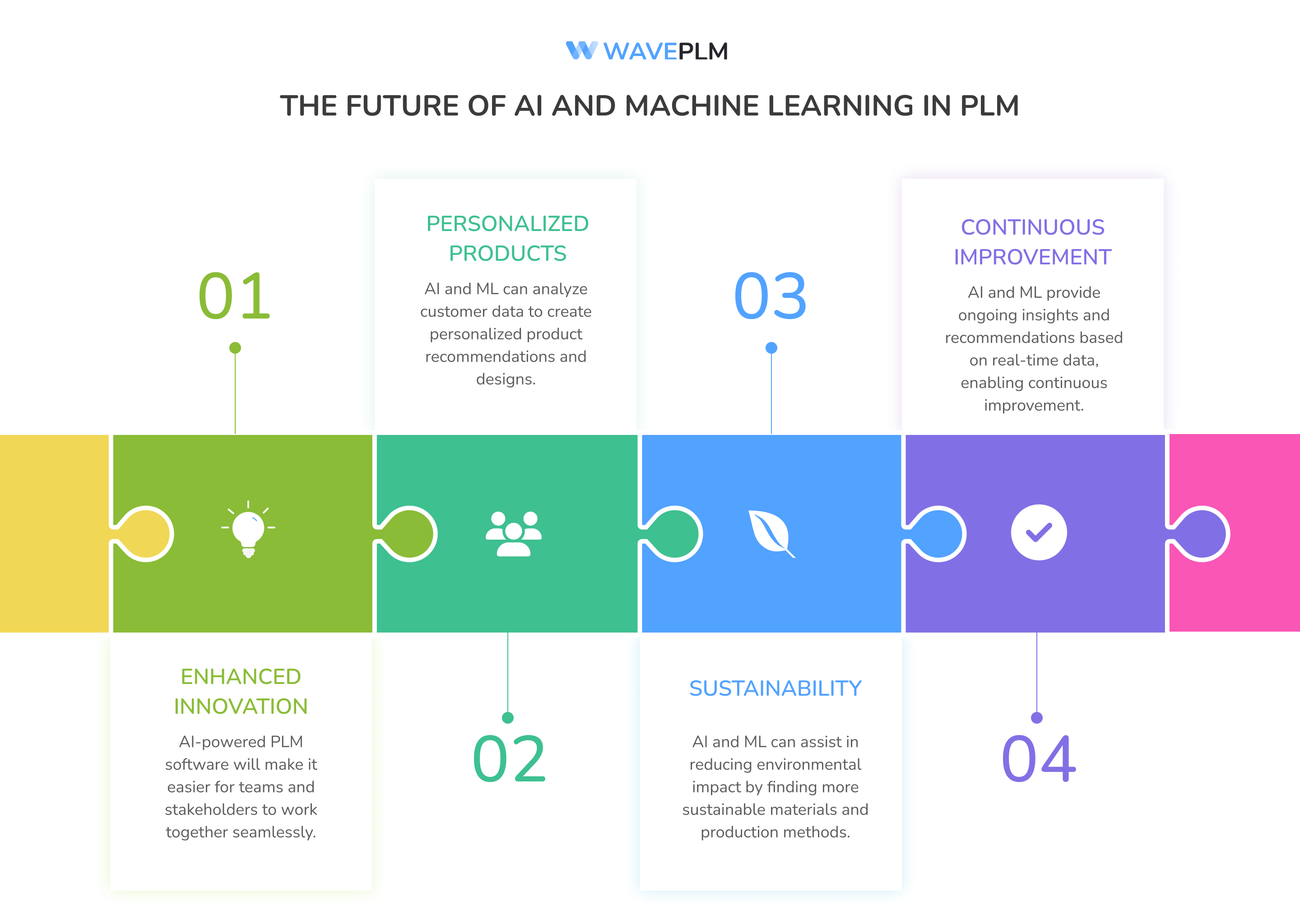
In today’s fast-paced and competitive business environment, companies are continually seeking innovative solutions to stay ahead. One such solution that has gained significant traction is Product Lifecycle Management (PLM) software.
PLM software is a powerful tool which helps manage a product’s journey from its initial idea through design, manufacturing, and service. With the rise of technology, adding Artificial Intelligence (AI) and Machine Learning (ML) to PLM software has become a game-changer, especially in industries like fashion. This article explores how AI and ML are transforming PLM by boosting automation, improving workflow optimization, and increasing overall efficiency.
Understanding PLM Software
Management system software provides a centralized platform for managing all data related to a product’s lifecycle. It includes product design, development, engineering, manufacturing, and even end-of-life management tools.
The primary goal of PLM software is to streamline processes, reduce time-to-market, and improve product quality. PLM software centralizes information, making sure all stakeholders have access to the latest and most accurate data. This is essential for making informed decisions.

The Emergence of AI and Machine Learning
AI and ML are subsets of computer science that focus on creating systems capable of performing tasks that typically require human intelligence. AI in fashion encompasses a broad range of capabilities, including problem-solving, decision-making, and natural language processing. Machine learning, a subset of AI, involves the development of algorithms that allow computers to learn from and make predictions based on data.
Adding AI and ML to PLM software introduces a new level of intelligence and automation to managing a product’s lifecycle. These advanced technologies allow PLM systems to process and analyze large amounts of data, identifying patterns and trends that might not be immediately obvious.
By doing so, AI and ML can make accurate predictions that help companies make better decisions. This improved decision-making leads to more efficient operations, saving time for team members and resources while increasing productivity and profitability. The integration of AI and ML into PLM software truly transforms how companies manage their products from start to finish.
AI and Machine Learning in Fashion PLM
The fashion industry, known for its rapid pace and ever-changing trends, is one sector that has greatly benefited from the integration of AI and ML into PLM software. Here are some key ways in which these technologies are revolutionizing fashion PLM:
Trend Analysis and Forecasting
In the realm of fashion, staying ahead of the curve is paramount. AI and ML algorithms act as diligent detectives, sifting through an extensive array of data sources such as social media trends, runway showcases, consumer behaviour patterns, and customer experience. By analyzing this wealth of information, these technologies can pinpoint emerging trends with uncanny accuracy. This foresight enables fashion companies to tailor their product offerings to match consumer preferences, thereby minimizing the risk of unsold inventory and maximizing profitability.
Design Optimization
Fashion designers face the daunting task of creating products that capture the essence of current trends while simultaneously meeting consumer demands. AI-powered PLM software comes to the rescue by acting as a virtual design assistant. Leveraging insights gleaned from historical data and current market trends, these platforms offer valuable suggestions regarding optimal materials, colors, and styles. This not only expedites the design process but also ensures that the final product resonates with the target audience.
Supply Chain Optimization
Managing the intricate web of suppliers, manufacturers, and distributors in the fashion supply chain is no small feat. AI and ML algorithms excel at navigating this complexity by analyzing supply chain data to identify inefficiencies, forecast demand, and optimize inventory levels. By streamlining production processes, reducing lead times, and minimizing costs, these technologies drive operational efficiency and bolster the bottom line for fashion companies.
Quality Control
Maintaining stringent quality standards is imperative in the fashion industry, where brand reputation hinges on product excellence. AI-driven PLM software takes quality control to the next level by automating the detection of potential defects and irregularities in product data. By flagging issues early in the production process, these platforms empower companies to address quality concerns promptly, thereby minimizing waste and ensuring that only top-tier products reach consumers.
In summary, the integration of AI and ML into PLM software represents a paradigm shift in how fashion companies approach product development and management. By harnessing the power of data-driven insights and predictive analytics, these technologies enable companies to navigate the ever-evolving fashion landscape with agility and precision, driving innovation and maintaining a competitive edge in the global marketplace.

Automation and Workflow Optimization
One of the most significant benefits of integrating AI and ML into PLM software is the ability to automate various tasks and streamlined workflows, which is a key to successful workflow optimization. Here are some key areas where AI and ML can make a substantial impact:
Automated Data Entry and Analysis
Manual data entry is time-consuming and prone to errors. AI-powered PLM software can automate data entry by extracting information from documents, emails, and other sources. Additionally, AI algorithms can analyze this data to provide insights and recommendations, saving time and reducing the risk of errors.
Predictive Maintenance
In manufacturing, equipment downtime can lead to significant delays and costs. Machine learning algorithms can analyze equipment data to predict when maintenance is needed, allowing companies to perform preventive maintenance and avoid unexpected breakdowns.
Resource Allocation
Efficient resource allocation is crucial for meeting production deadlines and optimizing costs. AI and ML can analyze production schedules, workforce availability, and other factors to allocate resources more effectively. This ensures that projects stay on track and within budget.
Workflow Automation
AI-powered PLM software can automate repetitive tasks, such as scheduling, reporting, and approvals. This frees up employees to focus on more strategic activities, improving overall productivity and efficiency.
Making smart decisions quickly is crucial in today’s business world. AI and ML play a big role in improving decision-making in PLM software by offering insights and suggestions based on data. Here are some ways they help:
Demand Forecasting
Accurate demand forecasting is vital for optimizing production planning and inventory management. Through sophisticated machine learning algorithms, PLM software can analyze historical sales data, market trends, and a multitude of other factors to predict future demand accurately. This enables companies to tailor their production levels accordingly, mitigating the risks associated with overproduction or stock shortages.
Product Development
The process of developing new products entails extensive research and testing phases. AI and ML capabilities within PLM software streamline this process by examining vast datasets encompassing previous product launches, customer feedback, and prevailing market trends. By identifying the most promising product concepts, these technologies expedite product development timelines and enhance the likelihood of successful outcomes.
Risk Management
Identifying and mitigating risks throughout the product lifecycle is paramount for ensuring seamless operations. AI and ML empower PLM software to proactively address potential risks by scrutinizing various datasets, such as supplier data, to anticipate issues like supply chain disruptions or quality discrepancies. This proactive approach enables companies to take preemptive measures, thereby safeguarding against potential disruptions and ensuring smooth production processes.

The Future of AI and Machine Learning in PLM
As AI and ML technologies continue to evolve, their impact on PLM software will become even more significant. Here are some exciting future developments we can expect:
Enhanced Collaboration
AI-powered PLM software will make it easier for teams and stakeholders to work together seamlessly. For instance, AI can help designers, engineers, and manufacturers communicate and share data in real time. This ensures everyone stays on the same page and works towards common goals, improving efficiency and teamwork.
Personalized Products
The demand for personalized products is growing, especially in industries like fashion. AI and ML can analyze customer data to create personalized product recommendations and designs. This means companies can offer customized products that meet individual preferences, leading to higher customer satisfaction and loyalty.
Sustainability
Many companies are prioritizing sustainability. AI and ML can assist in reducing environmental impact by optimizing the use of resources, minimizing waste, and finding more sustainable materials and production methods. This helps companies become more eco-friendly and responsible.
Continuous Improvement
AI and ML provide ongoing insights and recommendations based on real-time data, enabling continuous improvement. Companies can make small, incremental improvements to their products, processes, and workflows. This helps them stay competitive and adapt to changing market conditions, ensuring they remain successful in the long run.

Conclusion
The integration of AI and ML into PLM software is transforming the way companies manage their product lifecycles. These technologies offer significant benefits From trend analysis and design optimisation in the fashion industry to automation and workflow optimisation across various sectors. By enhancing decision-making, improving efficiency, and enabling continuous improvement, AI and ML are helping companies stay competitive in an increasingly dynamic market.
As technology continues to evolve, the role of AI and machine learning in PLM software will only become more critical. Companies that embrace these technologies will be well-positioned to innovate, adapt, and thrive in the years to come. The future of PLM is connected to AI and ML advancements, such as improved collaboration, personalized products, and sustainability efforts.





Leave a Reply